Symphonic Faiths: Featuring Reena Esmail's Vishwas and Stravinsky's Symphony of Psalms: UMD Symphony Orchestra and UMD Concert Choir - IN PERSON
Symphonic Faiths: Featuring Reena Esmail's Vishwas and Stravinsky's Symphony of Psalms - IN PERSON
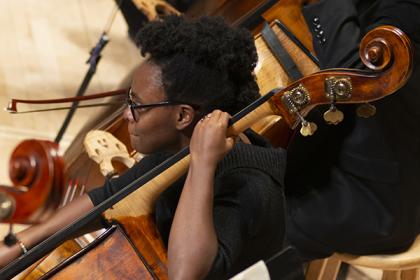
David Neely, conductor
Jesse Leong and Yu Wang, graduate conductors
Event Attributes
Presented By
For more information regarding accessible accommodations, please click here.
The UMD Symphony Orchestra joins forces with the UMD Concert Choir to present Igor Stravinsky’s intensely passionate Symphony of Psalms. This choral-symphony in three movements takes its name from the final psalm from the Book of Psalms, 150.
This theme of faith will carry through the entire concert. Felix Mendelssohn’s Symphony No. 5, known as “Reformation” refers to the Protestant Reformation in 16-century Germany, while the title of Reena Esmail’s Vishwas translates from Hindi to mean “fervent belief” or “faith.”
Program:
Reena Esmail: "Testament" from Vishwas for Orchestra
Felix Mendelssohn: Symphony No. 5, “Reformation”
Igor Stravinsky: Symphony of Psalms
About the UMD Symphony Orchestra (UMSO):
Through its committed and polished performances under the baton of David Neely, UMSO is dedicated to the power of musical communication. In its repertoire, the orchestra explores the intersection between traditional symphonic masterworks and marginalized works from various eras, with many programs featuring composers of diverse backgrounds.
About UMD Choral Activities:
Led by Edward Maclary, the choral ensembles have achieved international renown and offer a wide array of experiences with music encompassing all styles and eras. In addition to this season’s on campus performances, the UMD Concert Choir participates in annual collaborations with both the National Symphony Orchestra and the Baltimore Symphony Orchestra.
Health & Safety:
There may be COVID safety policies such as mask requirements in place when you attend this event. Please see our health and safety page for the most up to date information about attendance.
fghgf
PROGRAM MENU: PROGRAM • PROGRAM NOTES • ABOUT THE ARTISTS
PROGRAM
“Testament” from Vishwas
Reena Esmail (b. 1983)
Felix Mendelssohn (1809–1847)
- Andante – Allegro con fuoco
-
Allegro vivace
-
Andante
-
Chorale: Andante con moto – Allegro vivace
INTERMISSION
Igor Stravinsky (1882–1971)
-
Psalm 38: 13–14 [King James Ps. 39: 12–13]
-
Psalm 39: 2–4 [King James Ps. 40: 1–3]
-
Psalm 150 [King James Ps. 150]
PROGRAM NOTES
The theme of tonight’s concert—Symphonic Faiths—highlights the common thread between the three works on the program. Each of these pieces tells a story of faith: one of fervent devotion, one of assimilation, and one of a journey through confusion to praise.
“Testament,” from Vishwas
REENA ESMAIL
Born Feb. 11, 1983, Chicago
Indian American composer Reena Esmail connects musical traditions from India with those of the west. Esmail’s compositions as well as her leadership work promote cross-cultural knowledge and respect, helping to bridge and connect an often-divided world.
Vishwas was composed for sinfonietta, or a small chamber orchestra, in 2014, and was re-scored by Esmail in 2018 for full orchestra. Esmail uses the western ensemble of a symphony orchestra but takes both programmatic and musical inspiration from India. “Testament” is the third movement of this work, which Esmail calls a “bharatanatyam ballet,” referring to a style of classical dance that originated in Tamil Nadu, a state in southeast India. The story of “Testament” follows the poet Meera Bai and her devotion to Lord Krishna, a god who is a common subject for kathak, another style of classical dance that originated in northern India, in what is today the states of Uttar Pradesh and Rajasthan. Esmail provides a brief description of the story in her own program notes for the score:
The word vishwas (िवशवास) expresses the concept of fervent belief, or faith, in Hindi. Meera Bai, a celebrated saint-poet from 15th century India, is the quintessential embodiment of vishwas. Though she is forced into a traditional marriage to unite two kingdoms, she believes she is married to the Lord Krishna, a Hindu deity, and the events of her life are shaped around her fervent devotion to this intangible but omnipresent figure.
“Testament” is the final movement of a three-part work for bharatanatyam (Indian classical) dancer and orchestra. In Meera’s stubbornness, she stages a hunger strike outside the temple of her Lord Krishna, refusing to eat until the doors are opened. One night, after days of fasting, she is extremely weak and lays down to rest. A storm brews, and the high winds begin to swing the lamp outside the temple’s wooden door, causing the door to catch fire. As the storm builds, the door burns, eventually causing the entrance to the temple to reopen. This piece incorporates one of Meera’s own bhajans (devotional songs), in Raag Malhar, the raag that beckons rain. Krishna has used the forces of nature to show himself, and to honor Meera’s faithfulness to him. Even as the flames surround her, Meera walks calmly into the temple to honor her Lord.
Vishwas makes use of traditional Hindustani raags, which are woven through the fabric of the composition. It is fitting that all the information we currently have about Meera Bai and her struggles for self-expression are from her own songs.
As “Testament” begins, the Raag Malhar is audible in the oboe; the pitch bends recall the improvisation that is common within the Hindustani raag tradition. A raag specifies not only what notes are used, but also how a melody ascends and descends, is embellished with improvised ornaments, what notes are emphasized, and what rhythmic patterns, or taal, are used. The tempo quickens as the raag is passed between different instruments in the woodwinds and brass, the tremolo strings perhaps imitating Hindustani drone instruments such as the shruti box or tanpura. The tension builds and is released when the strings take over in a sonorous statement of the raag, supported by the entrance of the tabla, a set of a set of two drums of different sizes. Portraying Meera Bai and her devotion to Lord Krishna, the raag and devotional song are constant throughout the piece, just as Meera Bai’s dedication and adoration were constant. As the piece ends, we can envision Meera Bai entering the temple, despite the flames evoked by flourishing sixteenth notes, secure in her faith.
Symphony No. 5 in D Major, Op. 107 “Reformation”
FELIX MENDELSSOHN
Born Feb. 3, 1809, Hamburg ǀ Died Nov. 4, 1847, Leipzig
Felix Mendelssohn was born into a wealthy musical family. His mother first taught him music, his maternal great-aunt, Sara Levy, was a noted music patron and collector, and his sister, Fanny Mendelssohn Hensel, was also a composer. The family was also Jewish, an ethnic and religious identity that was increasingly unaccepted in Germanic lands as the nineteenth century progressed. In the areas that would become Germany upon its unification in 1871, Jewish people were not given full citizenship rights. Antisemitism was common, and Jews were often forced to pay fines, banned from certain jobs, and prevented from legally marrying or owning property. Given this climate, it is not surprising that many Jewish people emigrated from Germany or converted; Felix Mendelssohn’s family stayed in their homeland but converted to Protestantism. Felix and his three siblings were baptized in 1816, and his parents Abraham and Lea converted in 1822; it was in 1822 that the family also added the “Bartholdy” surname as a way to publicly proclaim their Christianity. In 1825, when Felix Mendelssohn was sixteen, he was confirmed in the Protestant faith.
Mendelssohn composed this “Reformation” symphony in the first part of 1830 for the three-hundredth anniversary of the Augsburg Confession of Faith. The Augsburg Confession of 1530 is one of the seminal documents of the Protestant Reformation; the document codifies the Lutheran beliefs first introduced by Martin Luther and helped to politically unify the different German states. Due to the delayed completion date of the symphony, it was not performed as intended and received its premiere two years later, in 1832. This would be the only performance in Mendelssohn’s lifetime—he rejected the work as too juvenile—and it was published as No. 5 posthumously, in 1868.
The symphony begins with the Dresden Amen, a series of six notes used to intone “Amen” in both Protestant and Catholic churches first in the city of Dresden, and throughout the Germanic state of Saxony. To modern ears, this opening sounds familiar; the Dresden Amen has been frequently used by composers, including Anton Bruckner, Gustav Mahler, and Richard Wagner, who also used it to symbolize religion, making it the leitmotif to represent the holy grail in his opera Parsifal. For Mendelssohn and his contemporaries at a time when being German meant being Protestant, hearing the Dresden Amen would have embodied their Christian faith. The second movement Allegro vivace is a cheerful minuet, the homophonic chordal writing and clear texture similar to that of Joseph Haydn. In the third movement Andante, Mendelssohn draws upon his Jewish heritage and quotes the song “Hevenu Shalom Aleichem,” used to welcome and celebrate Shabbat, the Jewish sabbath day. The traditional tune is stated by the violins, who carry the melody throughout the movement. While the inclusion of a Jewish melody in a symphony dedicated to the Reformation may seem odd, this speaks to Mendelssohn’s lived experience of one who grew up in a religiously diverse environment and who had to navigate multiple religious identities within himself and among his family of different professed faiths. Despite his conversion to Protestantism, Mendelssohn clearly was familiar with Jewish culture; he often used traditional Jewish melodies in his music and sometimes set to music translations of the Old Testament, or the Tanakh (Hebrew Bible), by his grandfather and Jewish philosopher Moses Mendelssohn. The third movement is connected attacca to the final movement, which begins with the Lutheran chorale tune “Ein feste Burg ist unser Gott,” written by Martin Luther. This unbroken connection between movements featuring a traditional Jewish song and a chorale that is a symbol of Protestantism invites a biographical interpretation of the symphony, of Mendelssohn assimilating to Protestant German culture. The fourth movement is a joyful proclamation of Protestantism; the rising arpeggio figures, quick tempo, and rapid imitation help to create a festive mood as the “Ein feste Burg” theme is stated throughout the movement. The imitation and counterpoint in this movement are a fitting tribute to Johann Sebastian Bach, a composer who spent the bulk of his career composing music for the Protestant church in Leipzig. The movement ends with the full ensemble stating the “Ein feste Burg” tune in a powerful, chorale texture, declaring Protestantism triumphant in Germany.
Symphony of Psalms
IGOR STRAVINSKY
Born Jun. 17 (O.S. Jun. 5), 1882, Oranienbaum (now Lomonosov) ǀ Died Apr. 6, 1971, New York
Born into the Russian lower gentry, Igor Stravinsky studied music from an early age. While in law school, Stravinsky had his compositional efforts encouraged by the famous Russian composer Nikolai Rimsky-Korsakov, who would eventually become his teacher. Though Stravinsky was getting steady premieres in Russia by his mid-twenties, he rocketed to fame through collaborations with impresario Sergei Diaghilev’s Paris-based Ballets Russes; the most famous of these ballets is The Rite of Spring. Throughout Stravinsky’s earlier style, especially in the Ballets Russes works, the influence from Rimsky-Korsakov and the other Russian nationalist composers is especially clear. But with the onset of World War I and the Russian Revolution, Stravinsky’s style would take a marked shift to neo-classicism, a style defined by its rejection of Romanticism and nineteenth-century forms of expression. Romanticism was firmly associated with Germany and so the war with Germany—and the vanquished Germany being blamed for all of WWI after its end—contributed to the rejection of Romantic artistic styles and structures. The disillusionment and uncertainty that reverberated throughout the world after WWI was felt even earlier by Stravinsky, who, because of his noble birth and family, would never be able to return to Russia after the Bolsheviks took power.
Effectively banned from his homeland and his wife ill with tuberculosis, it is not surprising that Stravinsky would reconnect with his Russian Orthodox faith. Commissioned by the Boston Symphony Orchestra for their fiftieth anniversary and composed throughout 1930, Symphony of Psalms incorporates Biblical texts, specifically from Psalm 39 (Latin Vulgate Bible Psalm 38) in the first movement, Psalm 40 (Vulgate Psalm 39) in the second movement, and Psalm 150 in the third and final movement. In keeping with the ideas of neo-classicism, this “symphony” does not follow the symphonic structure as standardized in the nineteenth century, with four movements and using specific forms within that. Rather, Stravinsky uses the term “symphony” in the literal sense to signal the blending of sonorities between the choral and instrumental ensembles, which he envisioned being of equal importance. (In today’s performance, with the singers masked for COVID-19, achieving this balance is particularly difficult.) The orchestra has additional winds and is also without clarinets, violins, and violas; the absence of especially the upper strings is an example of how Stravinsky was intentionally subverting norms and rejecting the timbres that so often carried emotional melodies in the nineteenth century.
After a brief introduction with double reed arpeggios, the low strings, French horns, and pianos enter with low sustained notes that imitate an organ, preparing for the chorus’s first statement of text from Psalm 39:
Exaudi orationem meam, Domine, et
deprecationem meam:
aruibus percipe lacrimas meas.
Ne sileas.
Quoniam advena ego sum apud te et
peregrinus, sicut omnes patres mei.
Remitte mihi, ut refrigerer prius quam
abeam et amplius non ero.
Hear my prayer, Lord, and my
supplication:
Give ear to my tears.
Do not keep silence.
For I am a stranger to you and a wanderer,
like all my fathers.
Pardon me, that I may be refreshed before I
depart and am no more.
There are three contrasting sections of music in the first movement, highlighting one of Stravinsky’s typical compositional traits to juxtapose contrasting blocks of material. The only section of music that is not repeated comes at the peak of the arch form that structures this movement. The centrality and uniqueness of this section serve to emphasize the text that describes the psalmist as a stranger and wanderer.
The second movement features a double fugue, a reference to the complex counterpoint of the Baroque era (1600–1750) and before. A fugue is introduced with a main melody, called a subject, that is then developed, or explored, in successive sections; Stravinsky overlaps two separate fugues in a mastery of musical layering. The first fugue is introduced in the oboe and is restricted to the instrumental ensemble throughout the movement. The second fugue is only heard in the chorus ensemble. A fugue’s defining feature of layered repetition and imitation is especially clear in the chorus; the subject is first introduced by the sopranos and then repeated in exact imitation by the altos, tenors, and basses. The chorus’s fugue is based on the text from Psalm 40 (Vulgate Psalm 39):
Exspectans exspectavi Dominum, et
intendit mihi.
Et exaudivit preces meas, et eduxit me de
lacu miseriae et de luto faecis.
Et statuit super petram pedes meos, et
direxit gressus meos.
Et immisit in os meum canticum novum,
carmen Deo nostro.
Videbunt multi, et timebunt, et sperabunt
in Domino.
With expectation I have waited for the
Lord, and he was attentive to me.
And he heard my prayers, and brought me
out of the pit of misery and mire of dregs.
And he set my feet upon a rock, and directed
my steps.
And he put a new hymn into my mouth, a
song to our God.
Many shall see, and shall fear, and they shall
hope in the Lord.
After being a wanderer and stranger in the first movement, the psalmist in this text has been heard by God and steadied in their faith. The complex fugal writing, a technique long used by sacred music composers, supports the text’s theme of renewed faith and preparation to sing a new song to the Lord.
Taken from Psalm 150, the third movement is a song of joyful praise:
Alleluia.
Laudate Dominum in sanctis ejus; laudate
eum in firmament virtutis ejus.
Laudate eum in virtutibus ejus; laudate
eum secundum multitudinem
magnitudinis ejus.
Laudate eum in sono tubae, laudate eum
in tympano et choro, laudate eum in
chordis et organo.
Laudate eum in cymbalis benesonantibus;
laudate eum in cymbalis jubilationis.
Omnis spiritus laudet Dominum!
Alleluia.
Alleluia.
Praise the Lord in his holy places; praise him
in the heavens of his power.
Praise him for his mighty acts; praise him
according to the multitude of his
greatness.
Praise him with sound of trumpet, praise him
with tambourine and choir, praise him
with strings and organ.
Praise him on resounding cymbals; praise
him on joyful cymbals.
Let every spirit praise the Lord!
Alleluia.
With this statement, the chorus concludes their journey with a strong declaration of faith, emphasized by their long, held tones that imitate sacred chant. The floating upper voices evoke a sense of timelessness, making their praise eternal. While neo-classicism aimed to separate itself from the perceived excessiveness of the Romantic nineteenth-century, this does not mean that composers like Stravinsky aimed to negate emotion. Rather, they aimed to separate their (and musicians’) personal emotion from the music to allow it to become universal, applying to all. The idea that music is not bound to one individual, or one stylistic era, is a fitting philosophy to set this sacred text that tells a story of searching, promise, and praise.
— Program Notes by Elizabeth Massey
ABOUT THE ARTISTS
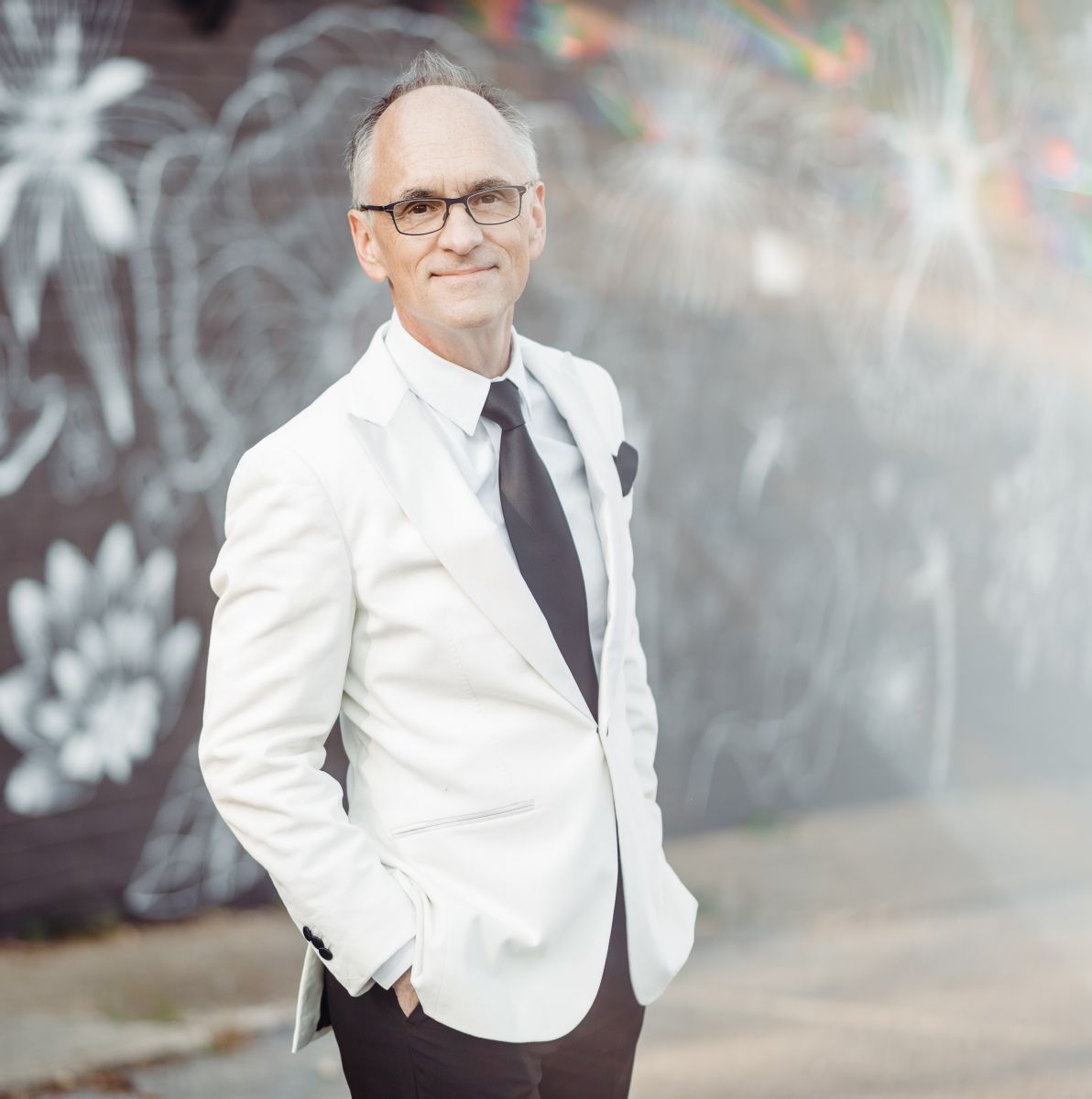 Recently described by Opera News as "a ninja warrior with a baton" for his performance of Berg's Wozzeck, DAVID NEELY maintains an active career in concert, opera and higher education. Previously serving on the conducting faculties of the Indiana University Jacobs School of Music, the University of Kansas and the University of Texas, Neely was named Kansas Artist-Educator of the Year for 2016–17 by the Kansas Federation of Music Clubs. He is currently the director of orchestral activities at the University of Maryland School of Music.
Recently described by Opera News as "a ninja warrior with a baton" for his performance of Berg's Wozzeck, DAVID NEELY maintains an active career in concert, opera and higher education. Previously serving on the conducting faculties of the Indiana University Jacobs School of Music, the University of Kansas and the University of Texas, Neely was named Kansas Artist-Educator of the Year for 2016–17 by the Kansas Federation of Music Clubs. He is currently the director of orchestral activities at the University of Maryland School of Music.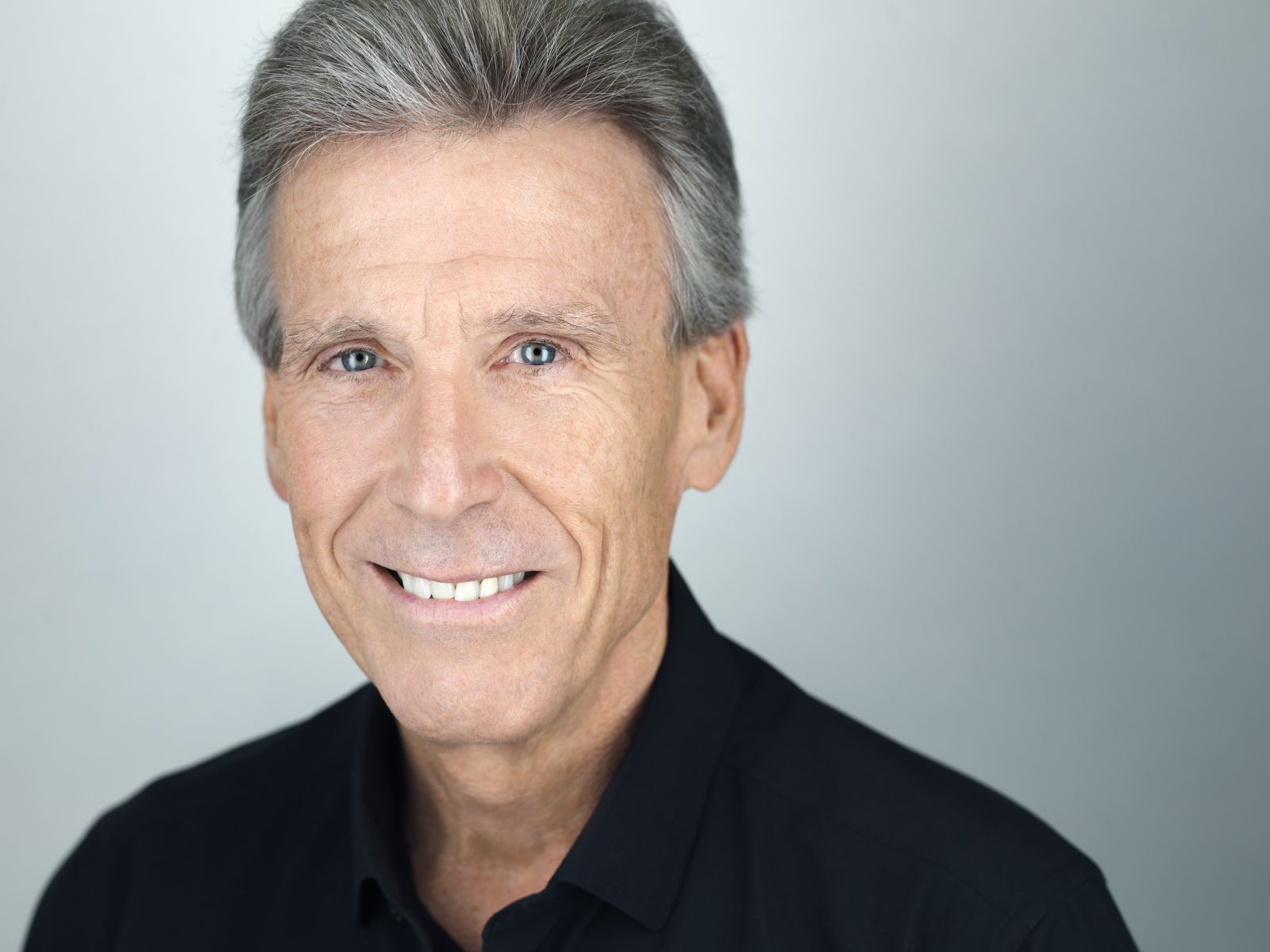 Recognized as one of the leading conductors and choral pedagogues of his generation, EDWARD MACLARY is professor of music and director of choral activities at the University of Maryland School of Music. Over the past two decades, Maclary has led the UMD Choral Activities program to global acclaim. The school’s flagship ensemble, the UMD Chamber Singers, has toured extensively and won top prizes in international competitions around the world. Maclary has served as the chorus master for conductors such as Robert Shaw, Gianandrea Noseda, Christoph Eschenbach, Marin Alsop, Andris Nelsons, Iván Fischer, Matthew Halls, Helmuth Rilling, Robert Spano, Nathalie Stutzmann and Masaaki Suzuki, among many others. Choirs under his direction have also performed with The Cleveland Orchestra and the Boston Symphony Orchestra.
Recognized as one of the leading conductors and choral pedagogues of his generation, EDWARD MACLARY is professor of music and director of choral activities at the University of Maryland School of Music. Over the past two decades, Maclary has led the UMD Choral Activities program to global acclaim. The school’s flagship ensemble, the UMD Chamber Singers, has toured extensively and won top prizes in international competitions around the world. Maclary has served as the chorus master for conductors such as Robert Shaw, Gianandrea Noseda, Christoph Eschenbach, Marin Alsop, Andris Nelsons, Iván Fischer, Matthew Halls, Helmuth Rilling, Robert Spano, Nathalie Stutzmann and Masaaki Suzuki, among many others. Choirs under his direction have also performed with The Cleveland Orchestra and the Boston Symphony Orchestra.
From 2014–17, Maclary was the director of the master class in conducting at the Oregon Bach Festival. He has also served as the artist-in-residence for the Eastman School of Music Summer Choral Institute and as the choral artist for the “Five Friends” Master Class Series at the Indiana University Jacobs School of Music. Other notable master class residencies have taken place at Westminster Choir College, Temple University and the University of Wisconsin-Madison. Maclary maintains an active schedule as a guest conductor for choral festivals and honors choirs around the country. Under his guidance, the graduate choral conducting program at the UMD School of Music has become one of the most respected and sought-after, and its alumni occupy professional and academic leadership positions throughout the nation.
In 2014, Maclary led the UMD Chamber Singers to Seoul, Korea, for performances at the 10th World Symposium on Choral Music at the invitation of the International Federation for Choral Music. In 2011, the ensemble was awarded the Premier Prix for Mixed Choirs and the Prix Ronsard for the performance of Renaissance music at France's Florilège Vocal de Tours, where Maclary was honored as the competition’s “Chef de Choeur.” The UMD Chamber Singers have also made numerous highly acclaimed appearances at the professional conferences of the American Choral Directors Association (ACDA) and the National Collegiate Choral Organization (NCCO). In addition to his extensive experience in early music, Baroque performance practice and the choral/orchestral canon, Maclary’s repertoire extends through the literature of the 21st century, highlighted by recent major collaborations with composers such as James MacMillan and John Adams.
Maclary received his doctorate in conducting with honors from Indiana University after earning a graduate degree in historical musicology from Boston University. In the following years, he worked closely on many performance projects with Robert Shaw and studied and collaborated with Helmuth Rilling, Margaret Hillis and Robert Page.
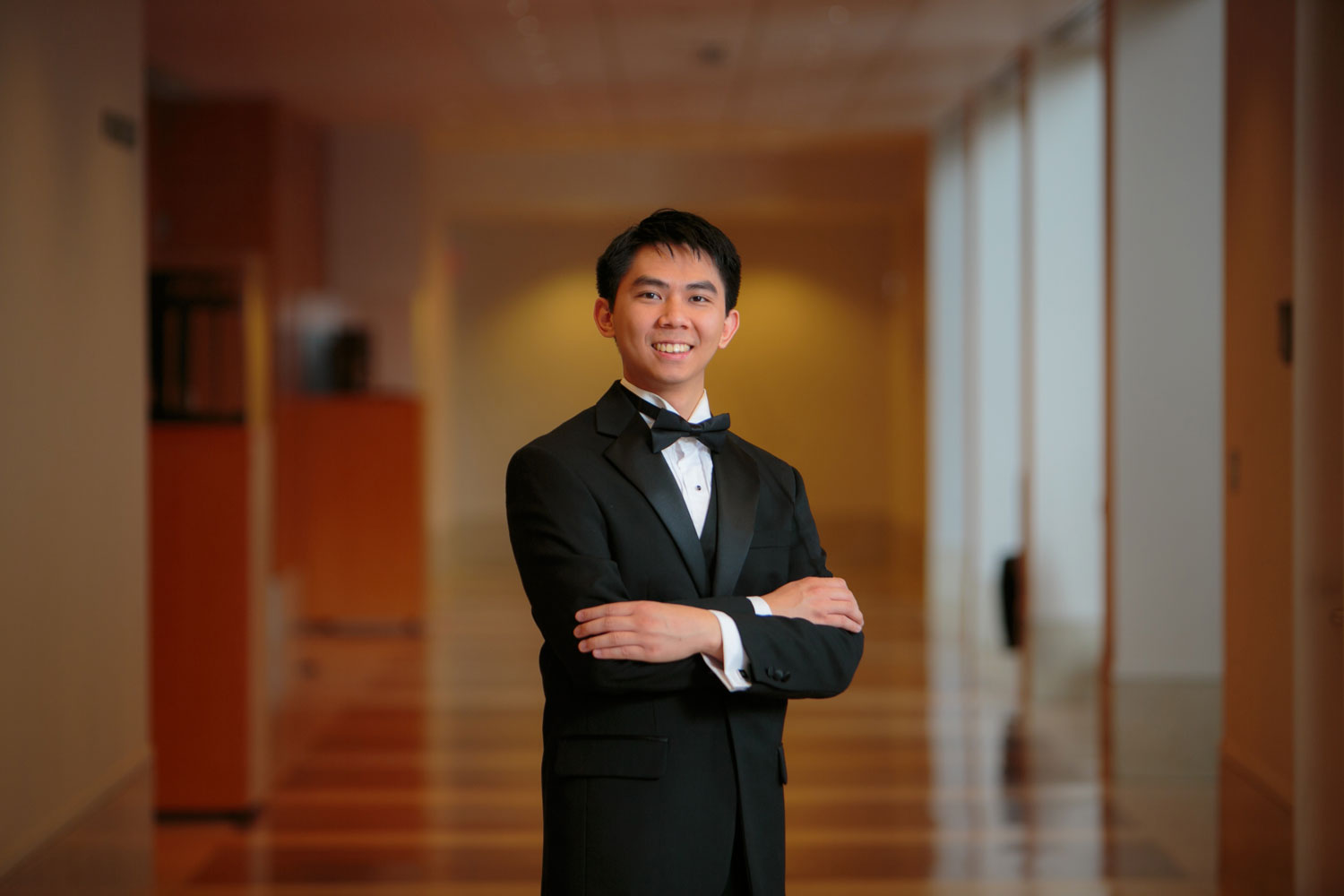 Possessing a repertoire of over 45 operas and musicals ranging from Mozart and Puccini to Rodgers and Hammerstein and Sondheim, conductor and pianist JESSE LEONG is a musician of uncommon breadth and versatility. His conducting has been called “taut and assured” by Opera Today. Leong was named the 2019 Julius Rudel/Kurt Weill conducting fellow by the Kurt Weill Foundation. In this capacity, he served as associate conductor to Ted Sperling—the Tony Award-winning artistic director of MasterVoices (New York City)—on Lady in the Dark, which featured another Tony winner, Victoria Clark. Leong has served as conductor, assistant conductor and pianist at Cincinnati Opera, Pacific Opera Project, Queen City Opera, Opera Saratoga and Pittsburgh Festival Opera.
Possessing a repertoire of over 45 operas and musicals ranging from Mozart and Puccini to Rodgers and Hammerstein and Sondheim, conductor and pianist JESSE LEONG is a musician of uncommon breadth and versatility. His conducting has been called “taut and assured” by Opera Today. Leong was named the 2019 Julius Rudel/Kurt Weill conducting fellow by the Kurt Weill Foundation. In this capacity, he served as associate conductor to Ted Sperling—the Tony Award-winning artistic director of MasterVoices (New York City)—on Lady in the Dark, which featured another Tony winner, Victoria Clark. Leong has served as conductor, assistant conductor and pianist at Cincinnati Opera, Pacific Opera Project, Queen City Opera, Opera Saratoga and Pittsburgh Festival Opera.
During the COVID-19 pandemic, Leong was hired at Dayton Opera and Des Moines Metro Opera before their respective performances of Going for Baroque! and Sweeney Todd were cancelled. For the latter, he served as virtual orchestra audio/video editor for their gala concert. His audio/video work can now be seen at the University of Maryland, College Park (UMD) as well as at College of Fellows of the American Theatre, Wear Yellow Proudly, Youth Music Monterey County, Unitarian Universalist Church in Reston and Bella Voce a cappella ensemble.
Also an accomplished educator, Leong serves as music director of the UMD Repertoire Orchestra and assistant conductor of the UMD Symphony Orchestra. His programming focuses on the work of BIPOC, LGBTQ+ and women composers in thematically integrated concerts alongside classical masterworks. He was also recently appointed assistant conductor of the Capital City Symphony.
An enthusiastic grammarian, linguist and author, Leong has written a book entitled “La bohème: A Connotative and Grammatical Translation.” Having been described as “Nico Castel plus,” his book has been praised by singers, conductors, coaches and directors alike. His doctoral dissertation will be entitled “The Butterfly Effect: Color Conscious Casting in the 21st Century.”
Leong received both his Bachelor of Music degree in piano performance and his Master of Music degree in orchestral conducting from the University of Cincinnati College-Conservatory of Music. He is currently a Doctor of Musical Arts candidate in orchestral conducting at the University of Maryland, College Park.
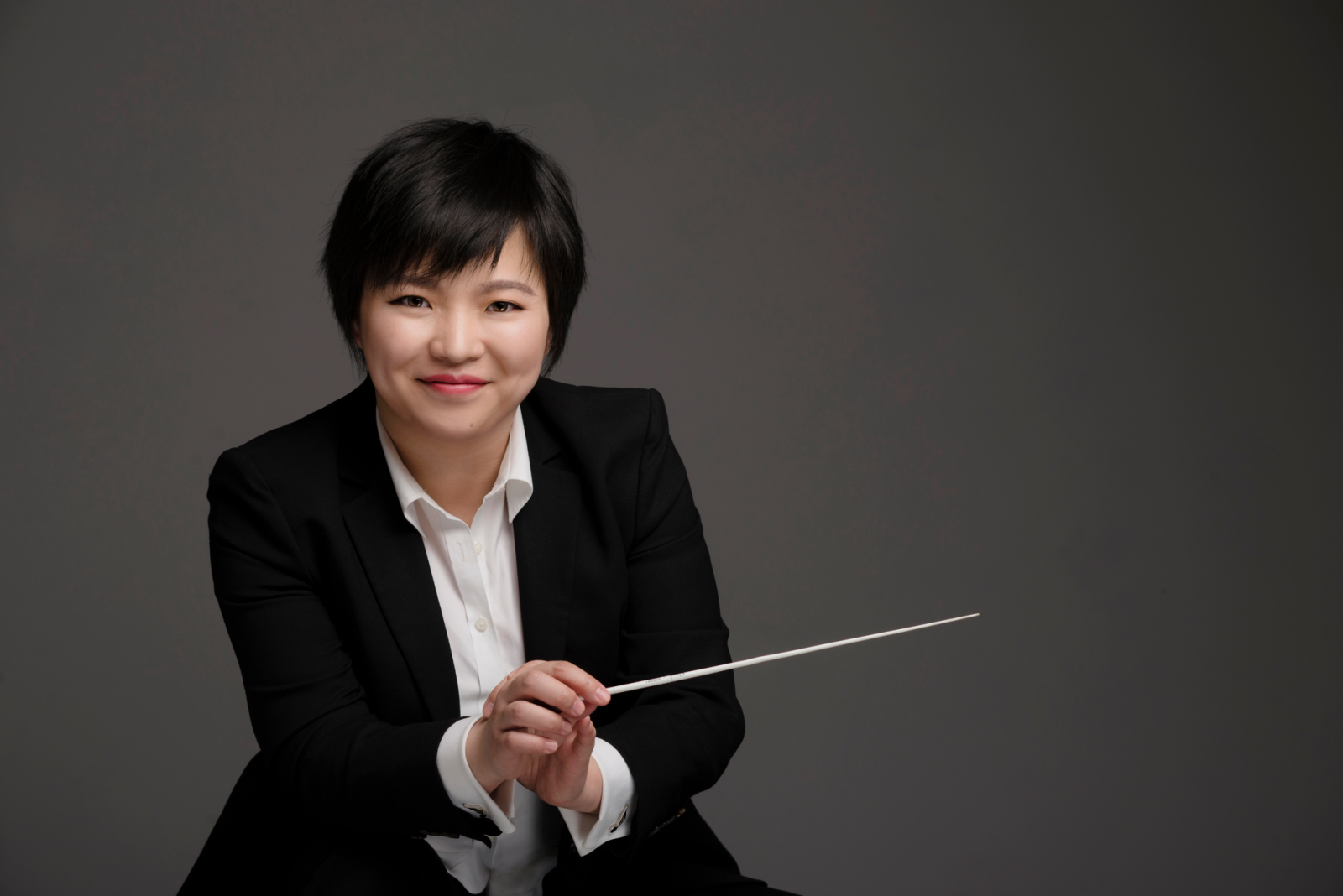 YU WANG is a Canadian conductor based in Toronto. She completed her bachelor’s degree in music history at the University of Toronto, and is currently finishing a graduate degree in orchestral conducting at the University of Maryland, College Park.
YU WANG is a Canadian conductor based in Toronto. She completed her bachelor’s degree in music history at the University of Toronto, and is currently finishing a graduate degree in orchestral conducting at the University of Maryland, College Park.
She was the founding music director of the Linus Chamber Orchestra project, which focused on reading and performing standard repertoire amongst early-career musicians. As a participant of the Jarvi Academy, Wang has performed in the Parnu Music Festival. She has conducted concerts in Estonia, Romania, the UK, the USA and Canada. In 2020, Wang had a productive pandemic, hosting virtual outreach programs in music appreciation in the Chinese-Canadian community.
A proud millennial, Wang enjoys avocado toast, video games and traveling.
ENSEMBLE PERSONNEL
University of Maryland Symphony Orchestra
Manager of Orchestral Activities
Mark Wakefield
Yu Wang
Amirhossein Norouz Nasser, Concertmaster (Esmail)
Myles Mocarski, Concertmaster (Mendelssohn)
Emily Konkle, Principal Second (Esmail)
Jonathan Toomer, Principal Second (Mendelssohn)
Charrine Liu-Maddox
Tong Li
Anna Luebke
Abby Wuehler
John Park
Leah Mitchell
Yuna Kim
Joanna Choi
Carl Chung
Clare Hofheinz
Kiran Kaur
Anna Kelleher
Wolfgang Koch-Paiz
Yu-Shin Lee
Eugene Liu
Lauren Palfreyman
Nina Staniszewska
Joey Yeoh
Chi Lee, Principal (Mendelssohn)
Alanah Cunningham
Seth Goodman
Nathan Hoffman
Rohan Joshi
Jane Lee
Ayocuan Pacheco
Maya Seitz
Wesley Hornpetrie, Principal (Esmail, Stravinsky)
Emily Doveala, Principal (Mendelssohn)
Syneva Colle
Sarah Bennett
Henry Bushnell
Gavriel Eagle
Rachel Hagee
Noah Hamermesh
Roland Kahn
Sean Kim
Michael Li
Simone Pierpaoli
Asa Dawson, Principal (Esmail, Stravinsky)
Omar Martinez Sandoval, Principal (Mendelssohn)
Daphine Henderson
Kayla Compson
Chad Rogers
Ethan Schwartz
Natalie Bartholet
Danielle Kim
Ruyuan Li
Matthew Ober
Hadas Sandalon
Katelyn Estep
Joshua Faison
Michael Helgerman
Stephanie Treat
Mark Hill
Kyle Glasgow
Katie Urrutia
Lauren Walbert
Andrew Zhang
Joseph Florance
Patrick Heinicke
Jimmy Ren
Alexander Weidman
Garrett Cooksey
Emerson Miller
Zach Miller
Catherine Robinson
Isaac Vallecillo
Antony Eleftheriou
AJ Muna
Jacob Rose
Brennan Rudy
Reece Updike
Eusung Choe
Brett Manzo
Adrian Sims
Lauri Johnson
Matthew Goinz
Mark Helms
Monica Tang
Matthew August
